Amazing Srilanka
Amazing Srilanka
The beautiful Royal Rock Dambulla cave temple
Minneriya National Park see wild elephants
beautiful Royal Botanical Gardens
Nuwara Eliya attractions
wonderful Bentota Beach.
- includes
- excludes
Things to do in and around srilanka
How to reach srilanka?
We've established convenient pickup and drop options right in your vicinity. Simply download the app, book your package using your location, and inform us of your exact whereabouts. Additionally, we've outlined various routes to reach the destination, taking into account commonly used traffic patterns.
Additional Information about Amazing Srilanka
Amazing Srilanka For enquiries
If you are looking to know more information about Amazing Srilanka, our team at srilanka will assist you personally through the below dedicated number
Amazing Srilanka address
Amazing Srilanka,
srilanka,
srilanka
Whatsplan's Amazing Srilanka contact number : +91 9842067265
Places covered in(11)
Minneriya National Park Sri Lankahabarana, north_central_province
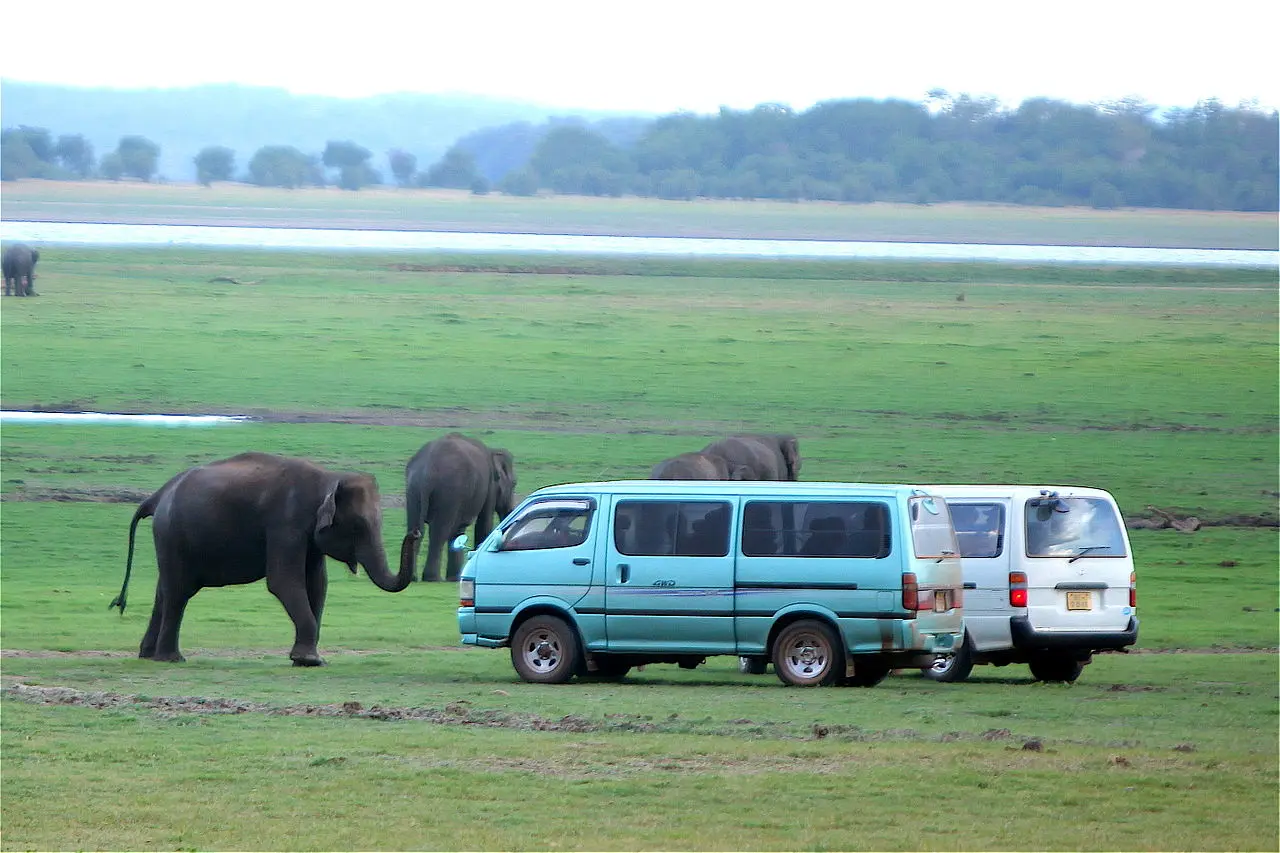
Minneriya National Park is a national park in North Central Province of Sri Lanka. The area was designated as a national park on 12 August 1997, having been originally declared as a wildlife sanctuary in 1938.[1] The reason for declaring the area as protected is to protect the catchment of Minneriya tank and the wildlife of the surrounding area. The tank is of historical importance, having been built by King Mahasen in third century AD. The park is a dry season feeding ground for the elephant population dwelling in forests of Matale, Polonnaruwa, and Trincomalee districts. The park earned revenue of Rs. 10.7 millions in the six months ending in August 2009.[2] Along with Kaudulla and Girithale, Minneriya forms one of the 70 Important Bird Areas (IBAs) of Sri Lanka.[3] The park is situated 182 kilometres (113 mi) from Colombo. The area is situated in dry zone of Sri Lanka and receives an average rainfall of 1,500–2,000 millimetres (59–79 in). The lowest temperature and highest of the park are 20.6 °C (69.1 °F) and 34.5 °C (94.1 °F) respectively.[4] The main sources of water for the tank are a diversion of Amban River and Elahera canal. The wet season lasts during the north eastern monsoon from October to January and from May to September considered as the dry season. The main habitats of Minneriya are of several types, including low-canopy montane forests, intermediate high-canopy secondary forests, scrublands, abandoned chena lands, grasslands, rocky outcrops, and wetlands. Terminalia arjuna, Manilkara hexandra, neem (Azadirachta indica), sacred fig (Ficus religiosa) and Piliostigma racemosum are commonly found in the area around the Minneriya tank.[1] Chloroxylon swietenia, Vitex altissima, Berrya cordifolia, Diospyros quaesita, and Drypetes sepiaria are dominant plant species in Minneriya.[4] Randia dumetorum, crotons, and Calotropis gigantea are common in abandoned chena cultivations and scrublands. Plantations of eucalyptus and teak, established by the Department of Forest Conservation, can be seen within the park. Monocots and grass species include Bambusa bambos, Ceylon date palm (Phoenix pusilla), Imperata cylindrica, and Panicum maximum. Large numbers of Sri Lankan elephants are attracted to grass fields on the edges of the reservoir during the dry season.[1] The Minneriya tank contributes to sustain a large herd. Elephants gathered here is numbering around 150-200.[4] Some reports account number of elephants to as high as 700.[5] They migrate here from Wasgamuwa National Park and benefit from food and shelter of the park's forest. Tourists visit Minneriya largely because of elephants, especially in dry season. The park is an important habitat for the two endemic monkeys of Sri Lanka: purple-faced langur and toque macaque.[4] Large herbivorous mammals such as Sri Lankan sambar deer and Sri Lankan axis deer frequent the park. Rare and endangered species such as Sri Lankan leopard and Sri Lankan sloth bear inhabit in Minneriya. Minneriya is one of the areas where the gray slender loris is reportedly found in Sri Lanka.[6] The Minneriya reservoir is an important habitat for large water birds such as lesser adjutant, painted stork, and spot-billed pelican.[1] Minneriya is a dormitory for many resident as well as migrant bird species. Flocks of 2000 little cormorants have been reported.[4] Great white pelican, ruddy turnstone, and grey heron are the other water birds here. Among the endemic birds are Sri Lanka junglefowl, Sri Lanka hanging parrot, brown-capped babbler, Sri Lanka grey hornbill, black-crested bulbul and crimson-fronted barbet. The number of threatened birds recorded from this national park is 11. Amphibians of Fejervarya pulla and Polypedates cruciger have been recorded from the area. There are eight species of endemic reptiles, and all of them are considered threatened.[4] Painted-lip lizard and Lankascincus fallax are among them. Saltwater crocodile, Indian python, Asian water monitor, and Bengal monitor are among the other reptiles. Four of the fresh water fishes recorded from Minneriya are endemic to Sri Lanka. The main threat to the park's forest is clearance for firewood and the practice might be resulted in decreasing the levels of water of the reservoir.[1] Water pollution in bathing areas, encroachment, illegal agricultural practices, overfishing, poaching are the other threats caused by man. Spread of invasive Lantana camara is a natural threat. The area is also part of Minneriya-Giritale Nature Reserve which declared in four stages from 1988 to 1997. Conservative measures including habitat restoration and removing livestock from the area, have been proposed.
Temple of the Toothkandy, central_province
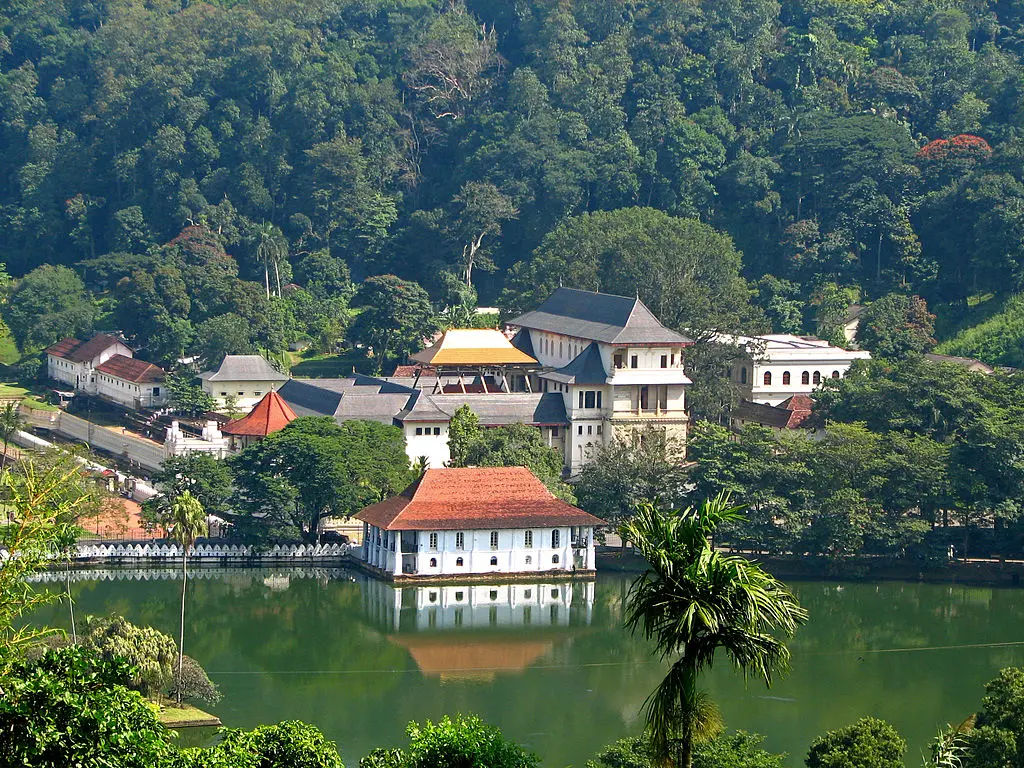
The Temple of the Tooth, also known as Sri Dalada Maligawa, is a sacred Buddhist temple located in the city of Kandy, Sri Lanka. It is one of the most revered and significant religious sites in the country. The temple houses a relic believed to be the tooth of Lord Buddha. This relic is considered highly sacred and has great significance for Buddhists. The Temple of the Tooth is a splendid example of Kandyan architecture. It features intricate woodwork, carvings, and a red-tiled roof. The temple is associated with the Esala Perahera, an annual procession featuring cultural performances and a majestic tusker (elephant) carrying the sacred relic casket. The inner chamber that houses the tooth relic is known as the "Vadahitina Maligawa." Visitors may have the opportunity to view this sacred chamber during designated times. An octagonal pavilion with a unique design, providing panoramic views of the surrounding area. The tooth relic is considered one of the holiest objects in Buddhism, and the Temple of the Tooth is a place of pilgrimage for Buddhists from Sri Lanka and around the world. The temple's history dates back to ancient times, and it has undergone various constructions and renovations. It has witnessed the rise and fall of different kingdoms in Sri Lanka. The Esala Perahera, held annually, is a grand festival associated with the Temple of the Tooth. It involves a vibrant procession with traditional dancers, drummers, and adorned elephants. The Temple of the Tooth is centrally located in Kandy and is easily accessible for visitors. Visitors are required to dress modestly when entering the temple premises. It's advisable to check the opening hours and any specific guidelines before planning a visit. The Temple of the Tooth is not only a religious site but also a cultural and historical landmark that showcases the rich heritage of Sri Lanka. It holds deep spiritual significance and is an important destination for those interested in Buddhist culture and history.
Colombocolombo, western_province
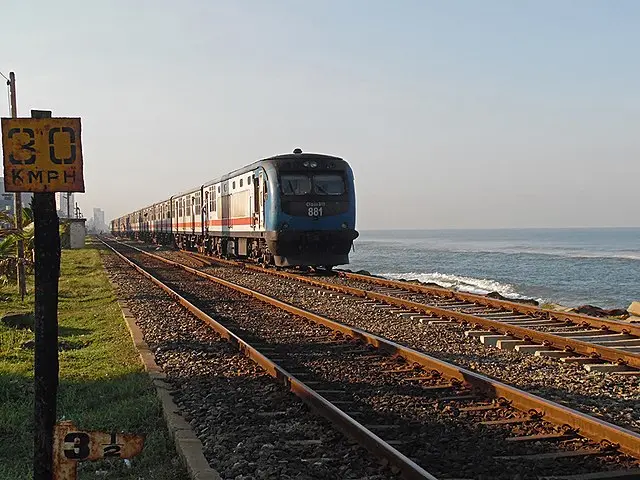
Colombo is the largest city of Sri Lanka by population. It is the financial centre of the island and a popular tourist destination.Colombo is a busy and vibrant place with a mixture of modern life and colonial buildings and ruins.It was the legislative capital of Sri Lanka until 1982. Due to its large harbour and its strategic position along the East-West sea trade routes, Colombo was known to ancient traders 2,000 years ago. It was made the capital of the island when Sri Lanka was ceded to the British Empire in 1815 and its status as capital was retained when the nation became independent in 1948. In 1978, when administrative functions were moved to Sri Jayawardenepura Kotte, Colombo was designated as the commercial capital of Sri Lanka.
Dambulla Royal Cave Temple kandy, dambulla
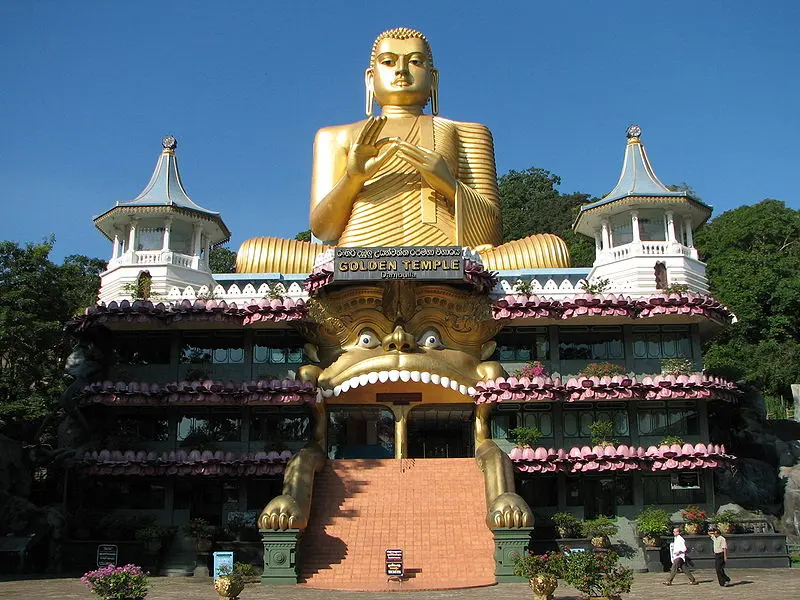
Dambulla cave temple (Sinhalese: Dam̆būlū Len Vihāraya, Tamil Tampuḷḷai Poṟkōvil) also known as the Golden Temple of Dambulla is a World Heritage Site (1991) in Sri Lanka, situated in the central part of the country. This site is situated 148 kilometres (92 mi) east of Colombo and 72 kilometres (45 mi) north of Kandy. Dambulla is the largest and best-preserved cave temple complex in Sri Lanka. The rock towers 160 m over the surrounding plains.There are more than 80 documented caves in the surrounding area. Major attractions are spread over five caves, which contain statues and paintings. These paintings and statues are related to Gautama Buddha and his life. There are a total of 153 Buddha statues, three statues of Sri Lankan kings and four statues of gods and goddesses. The latter include Vishnu and the Ganesha. The murals cover an area of 2,100 square metres (23,000 sq ft). Depictions on the walls of the caves include the temptation by the demon Mara, and Buddha's first sermon.
Nuwara Eliyanuwaraeliya, nuwaraeliya
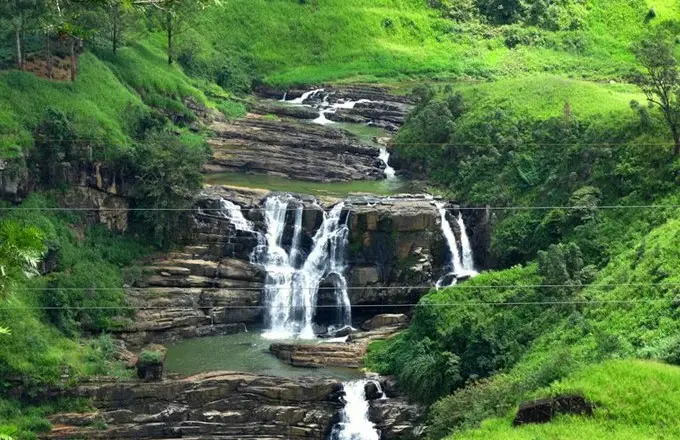
Nuwara Eliya (Sinhalese: නුවර එළිය [nuwərə ɛlijə]; Tamil: நுவரெலியா) is a city in the hill country of the Central Province, Sri Lanka. Its name means "city on the plain (table land)" or "city of light". The city is the administrative capital of Nuwara Eliya District, with a picturesque landscape and temperate climate. It is at an altitude of 1,868 m (6,128 ft) and is considered to be the most important location for tea production in Sri Lanka. The city is overlooked by Pidurutalagala, the tallest mountain in Sri Lanka. Nuwara Eliya is known for its temperate, cool climate – the coolest area in Sri Lanka.
Cinnamon Gardenscolombo, western_province
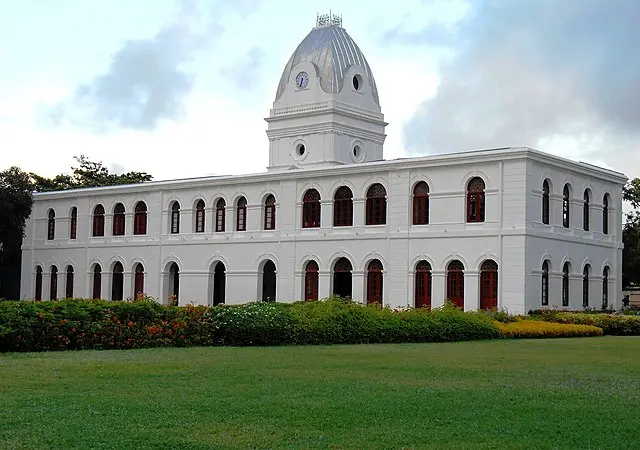
Cinnamon Gardens (Sinhala:කුරුඳු වත්ත) is an affluent neighbourhood of Colombo, Sri Lanka located 3 kilometers south-east from Colombo's centre. Cinnamon Gardens is named from the former cinnamon plantation in this area. At present, Cinnamon Gardens is the location of the Prime Minister's Office, Independence Hall, Colombo Town Hall and National Museum as well as numerous foreign embassies and high commissions, located down streets lined with fine trees and mansions that are home to the country’s elite.
Bentotagalle, southernprovince
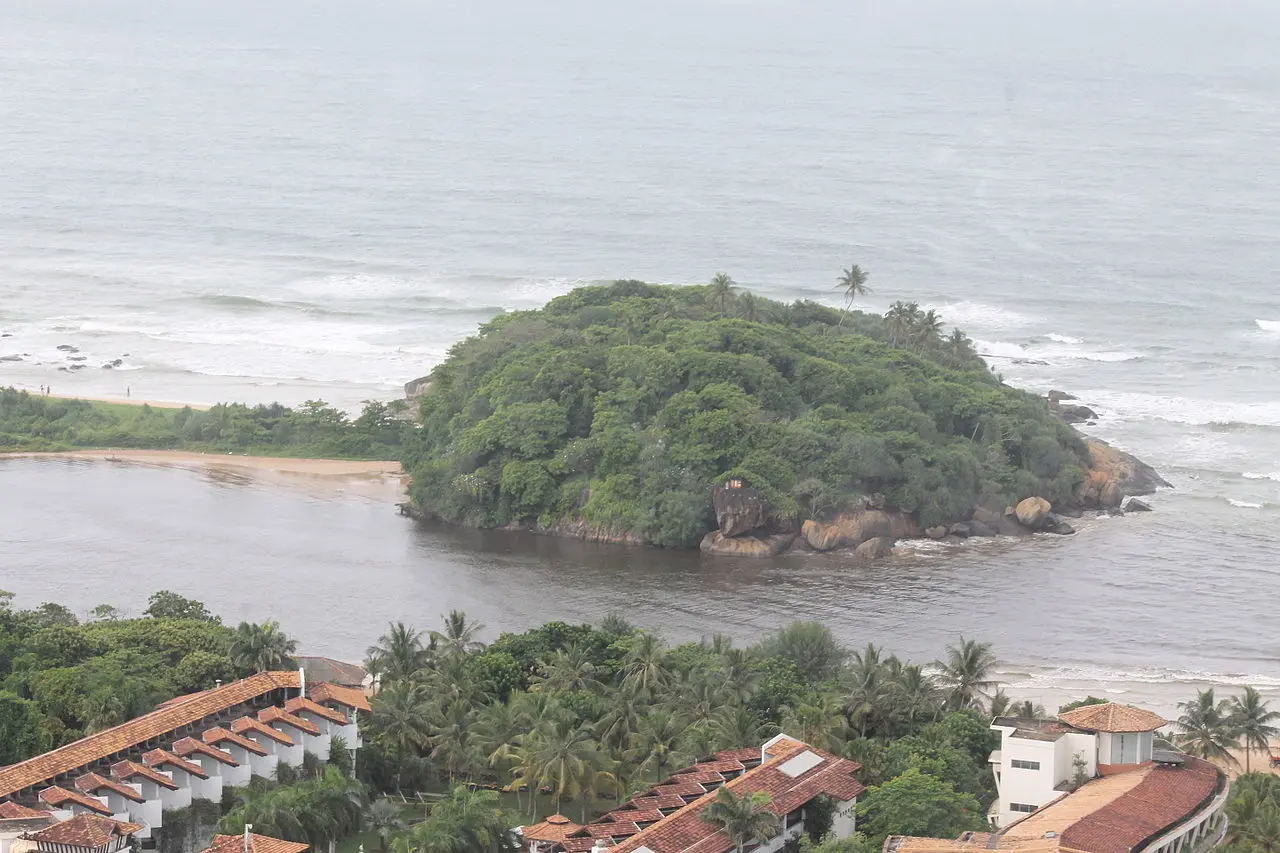
Bentota is a tourist attraction, with a local airport (Bentota River Airport) and a handful of world-class hotels. It is a destination for watersports. Bentota also delivers an ancient art of healing called Ayurveda. Bentota is famous for its toddy production, an alcoholic beverage made out of coconut nectar. It also has a turtle hatchery, located on Induruwa beach. The lagoons, the estuaries, the calm weather, all will scintillate you like never before. Bentota is also famous for its dazzling marine life and you will love the atmosphere once you step in. A serene beauty, especially for the newly wedded couples, this place is speechless and its exquisiteness cannot be expressed in words, but only felt. Benthota is a historical place described in ancient messenger poems (sandeśa kāvya). The Galapatha Viharaya is one of a cluster of five ancient temples in the region.
Sigiriya Rock Fortresssigiriya, central_province
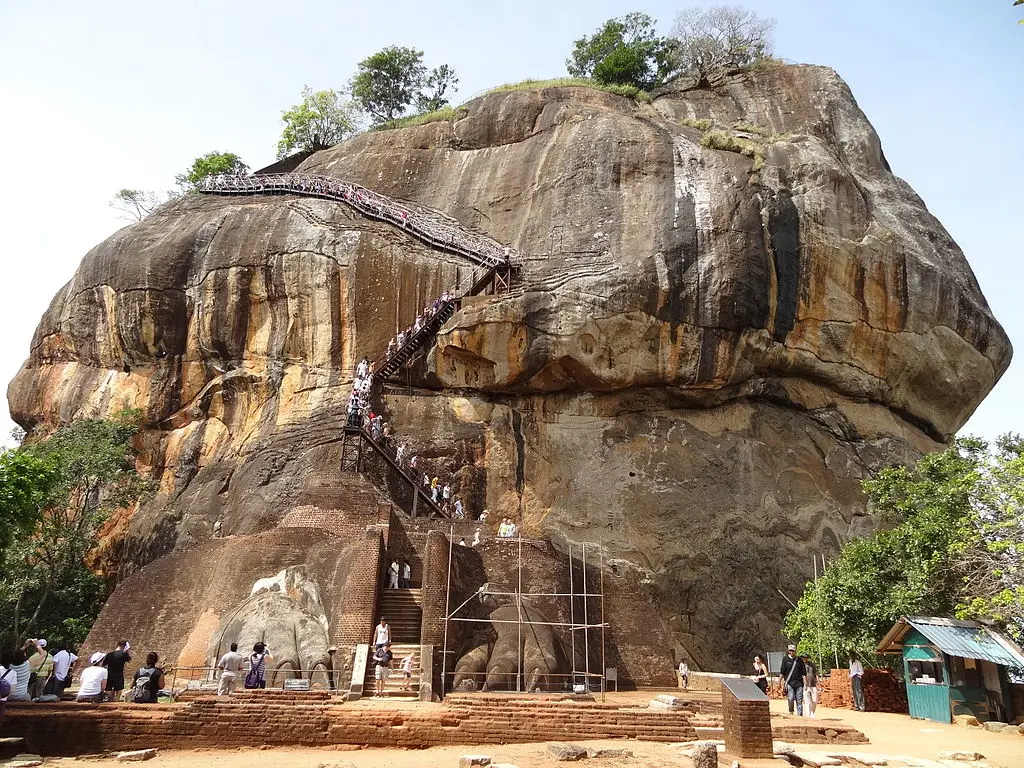
Sigiriya or Sinhagiri (Lion Rock Sinhalese: සීගිරිය, Tamil: சிகிரியா, pronounced see-gi-ri-yə) is an ancient rock fortress located in the northern Matale District near the town of Dambulla in the Central Province, Sri Lanka. The name refers to a site of historical and archaeological significance that is dominated by a massive column of rock nearly 200 metres (660 ft) high. The capital and the royal palace was abandoned after the king's death. It was used as a Buddhist monastery until the 14th century. Sigiriya today is a UNESCO listed World Heritage Site. It is one of the best preserved examples of ancient urban planning. The terraced gardens are formed from the natural hill at the base of the Sigiriya rock. A series of terraces rises from the pathways of the boulder garden to the staircases on the rock. These have been created by the construction of brick walls, and are located in a roughly concentric plan around the rock. The path through the terraced gardens is formed by a limestone staircase. From this staircase, there is a covered path on the side of the rock, leading to the uppermost terrace where the lion staircase is situated.
Royal Botanical Gardenskandy, central_province
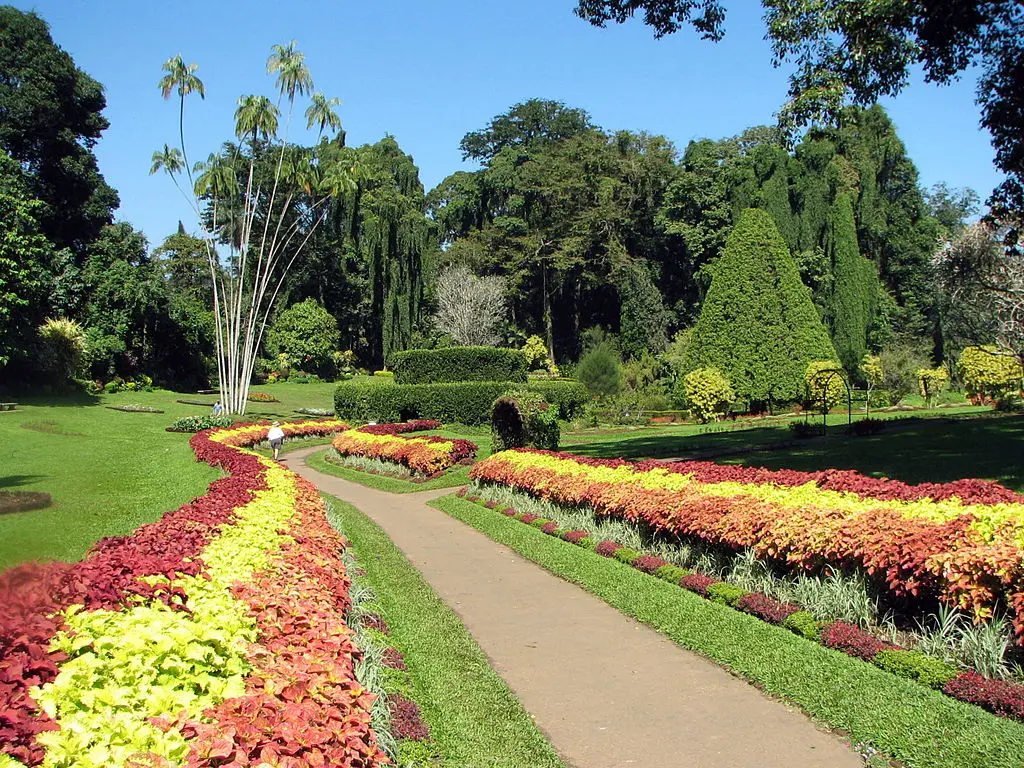
Royal Botanic Gardens, Peradeniya are about 5.5 km to the west of the city of Kandy in the Central Province of Sri Lanka. It attracts 2 million visitors annually. It is near the Mahaweli River (the longest in Sri Lanka). It is renowned for its collection of orchids. The garden includes more than 4000 species of plants, including orchids, spices, medicinal plants and palm trees.Attached to it is the National Herbarium of Sri Lanka. The total area of the botanical garden is 147 acres (0.59 km2), at 460 meters above sea level, and with a 200-day annual rainfall. It is managed by the Division of National Botanic Gardens of the Department of Agriculture. Thereafter, the groundwork for a botanical garden was formed by Alexandar Moon in 1821. He used the garden for coffee and cinnamon plants. The Botanical Garden at Peradeniya was formally established in 1843 with plants brought from Kew Garden, Slave Island, Colombo, and the Kalutara Garden in Kalutara. The Royal Botanic Garden, Peradeniya was made more independent and expanded under George Gardner as superintendent in 1844. On Gardner's death in 1849 George Henry Kendrick Thwaites became superintendent. He served until he resigned in 1879, when he was succeeded by Henry Trimen, who served until 1895. There are avenues in the River Drive such as Cook's Pine Avenue, Palmyra Palm Avenue, Double Coconut Avenue, Cabbage Avenue, and Royal Palm Avenue. The classical Avenue of Palms is in this Garden. One item with a significant history is the Cannonball Tree planted by King George V of the United Kingdom and Queen Mary in 1901. It is often laden with fruit, which are thought to resemble cannonballs.
Horton Plains National Parkohiya, central_province
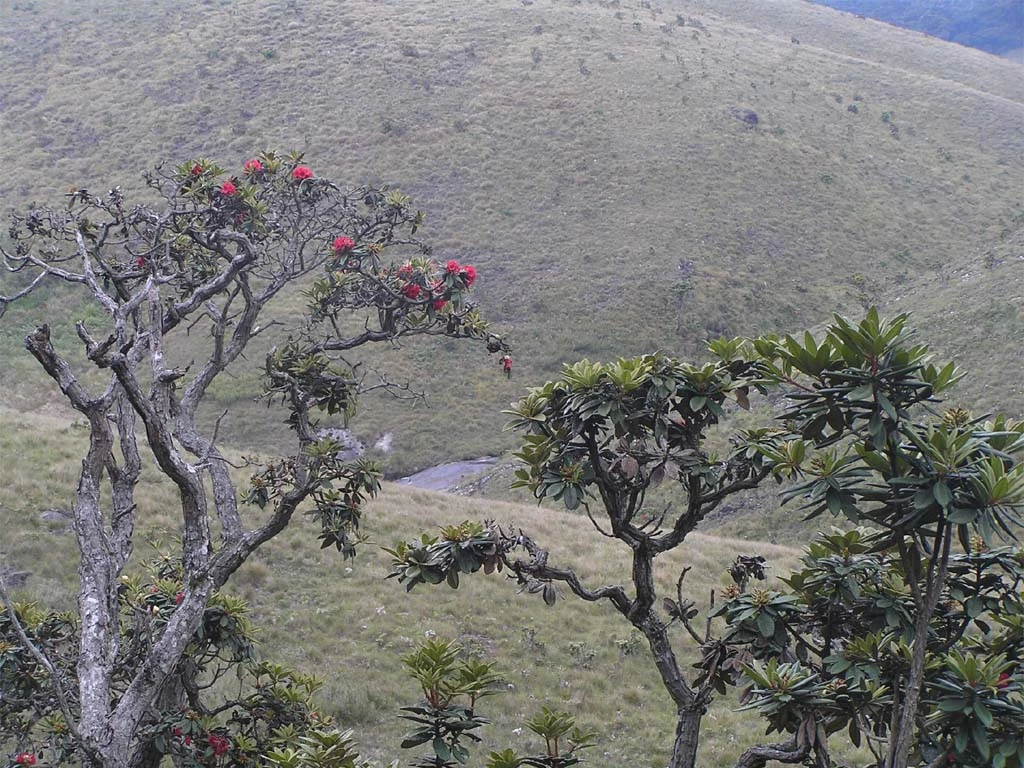
Horton Plains National Park is a protected area in the central highlands of Sri Lanka and is covered by montane grassland and cloud forest. This plateau at an altitude of 2,100–2,300 metres (6,900–7,500 ft) is rich in biodiversity and many species found here are endemic to the region. This region was designated a national park in 1988. It is also a popular tourist destination and is situated 8 kilometres (5.0 mi) from Ohiya, 6 kilometres (3.7 mi) from the world famous Ohiya Gap/Dondra Watch and 32 kilometres (20 mi) from Nuwara Eliya. The Horton Plains are the headwaters of three major Sri Lankan rivers, the Mahaweli, Kelani, and Walawe. In Sinhala the plains are known as Maha Eliya Plains (මහ එළිය තැන්න). Stone tools dating back to Balangoda culture have been found here. The plains' vegetation is grasslands interspersed with montane forest and includes many endemic woody plants. The mean annual rainfall is greater than 2,000 millimetres (79 in). Frequent cloud cover limits the amount of sunlight that is available to plants. The mean annual temperature is 13 °C (55 °F) but the temperature varies considerably during the course of a day, reaching as high as 27 °C (81 °F) during the day time, and dipping as low as 5 °C (41 °F) at night. During the southwest Monsoon season, the wind speed sometimes reaches gale force. Although some rain falls throughout the year, a dry season occurs from January–March. The ground frost is common in February. Mist can persist in the most of the day during the wet season.Many pools and waterfalls can be seen in the park, and Horton Plains is considered the most important watershed in Sri Lanka.The Horton Plains are the headwaters of important rivers such as the Mahaweli, Kelani, and Walawe. The vertebrate fauna of the region includes 24 species of mammals, 87 species of birds, nine species of reptiles and eight species of amphibians.The Sri Lankan elephant disappeared from the region in the 1940s at the latest.At present, the largest and the most commonly seen mammal is the sambar deer. Some research findings estimate the population of sambar deer to be around 1500 to 2000, possibly more than the carrying capacity of the plains.
Nuwara Eliya,Srilankanuwaraeliya, nuwaraeliya

Kirigalpotta is the 2nd tallest mountain in Sri Lanka at 2,388 m (7,835 ft) above mean sea level, and is also the highest mountain in the country whose summit is accessible to the general public (the highest point, Pidurutalagala, is occupied by a military base and off-limits to the public). The peak is situated near the city of Nuwara Eliya, within the Nuwara Eliya District. Only one 7 km (4 mi) hiking trail provides access to the mountain's summit via the Horton Plains National Park, although the trail is not very popular.